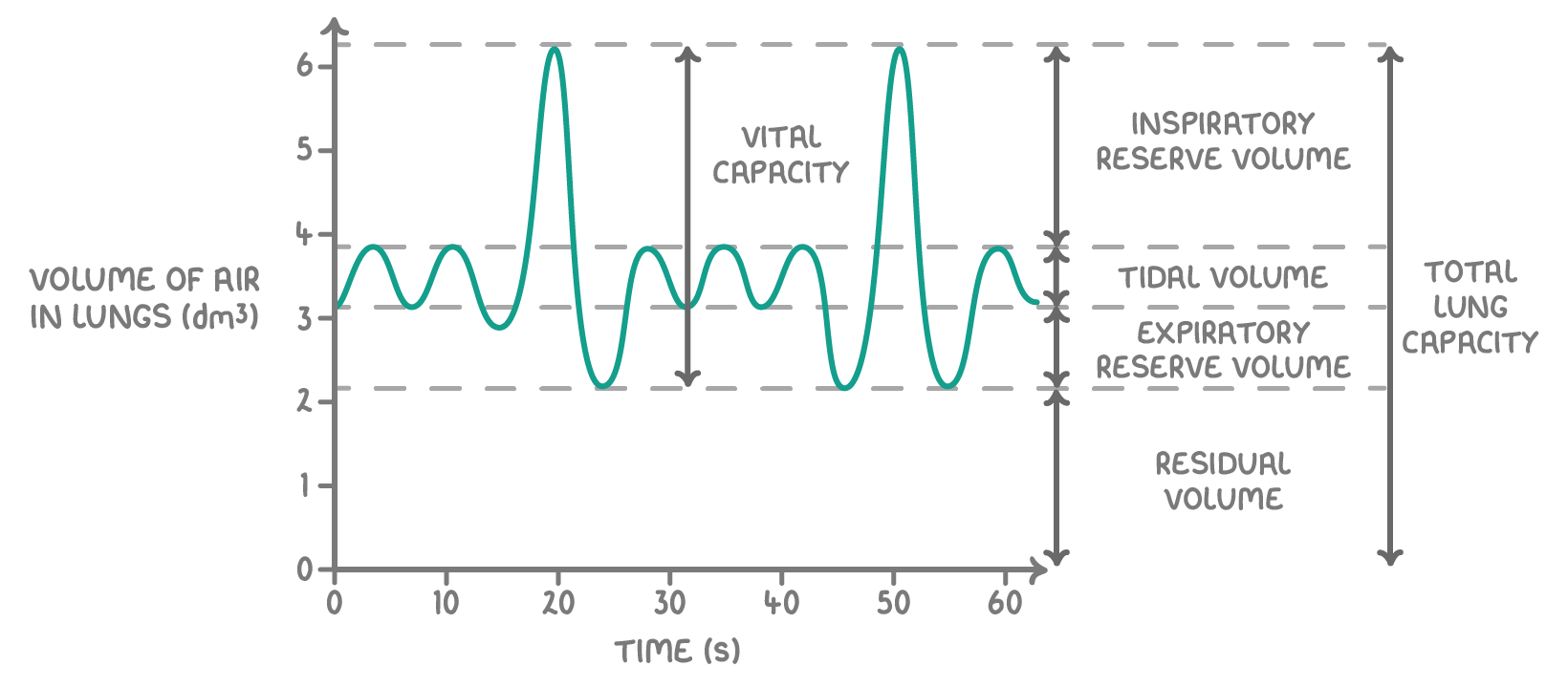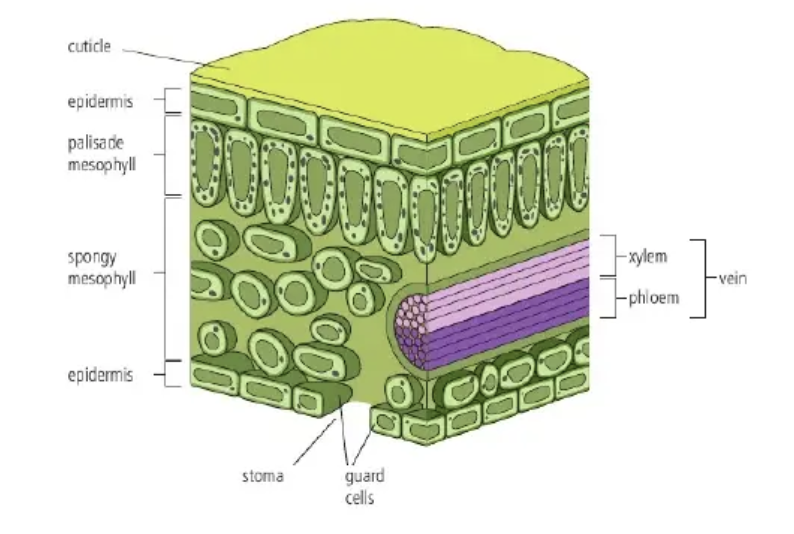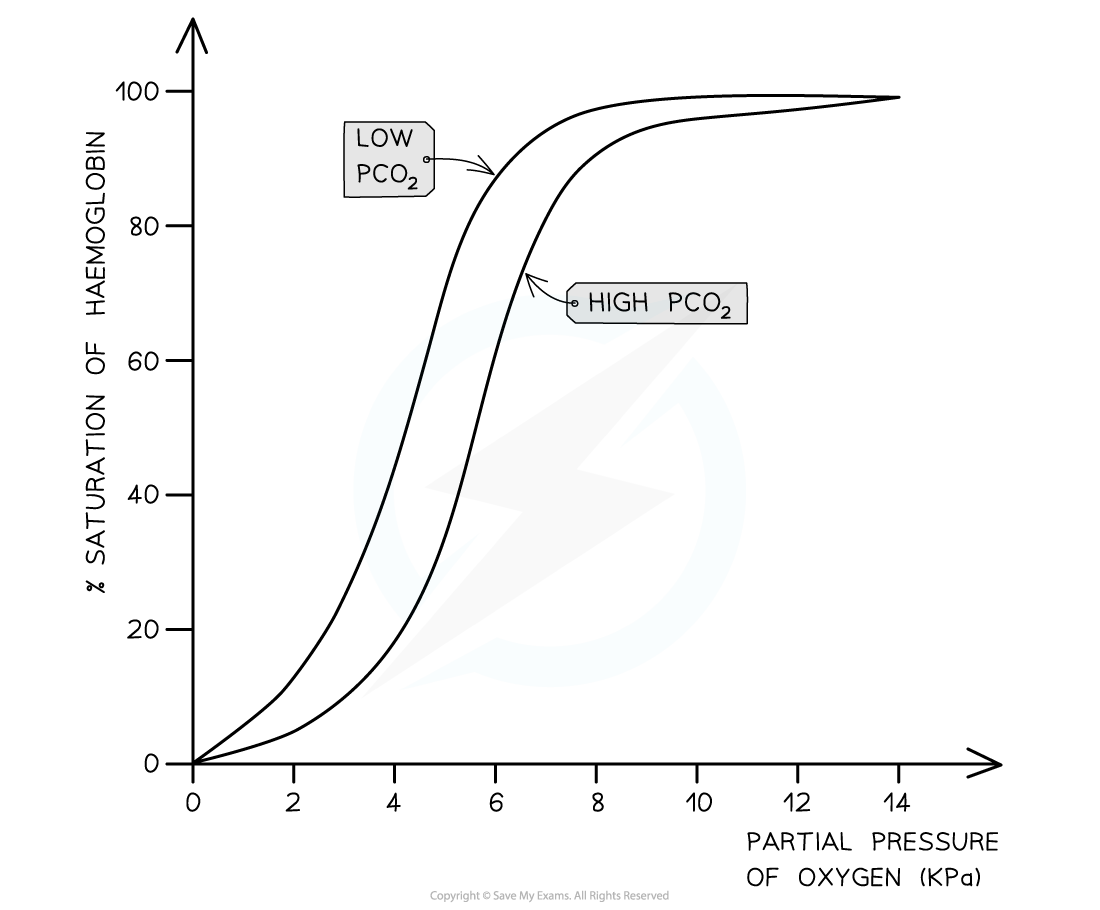B3.1 Gas Exchange
1/13
There's no tags or description
Looks like no tags are added yet.
Name | Mastery | Learn | Test | Matching | Spaced |
|---|
No study sessions yet.
14 Terms
B3.1.1 Gas Exchange
All organisms do it.
Absorb 1 gas → release an other.
Photosynthesis: absorb CO2 and release O2.
(aerob)Respiration: absorb O2 and release CO2
For small/unicellular organisms; gas exchange can happen at surface and is simple: large SA/V ratio = easy to keep up with needs
For larger organisms: metabol. tissue deep in body → adaptations to exchange gas w atmosphere+water and their own tissue. Also, SA/V ratio is smaller; of full body; not rapid enough gas exchange; specialized gas exchange
B3.1.2 Gas Exchange Surfaces
Permeable to respiratory gases: CO2 + O2
Thin: to keep diffusion distances short
Moist: encourage gas diffusion
Large SA; maximize diffusion
Concentration gradient: so it actually happens…
Gas exchange surfaces need these in order to exchange rapidly enough
B3.1.3 Concentration gradients
Need to be maintain so O2 can diffuse into, and CO2 can diffuse out of the blood.
Gills: water must be continuously passed over gills, continuous blood flow to dense blood vessel network
Lungs: air continuously refreshed (ventilated), continuous blood flow to dense blood vessel network
Maintain conc gradient:
New gases on outside
New gases on inside
B2.1.4 Mammalian Lungs
Trachea → 2bronchi → bronchioli →alveoli
Alveoli = sacs that allow for gas exchange: one cell thick layer of alveolar cell; blood from pulm art → pulm vein. O2 into blood, CO2 out of blood; blue→red.
Layer: type I pneum: normal, 1 cell… type II pneum: secrete surfactant;reduce tension
Adapted for gas exchange:
Airways for ventilation
Large Surface area:
Large capillary beds
Short diffusion distances
Moist surf area: surfactant
B3.1.5 Lung Structure (bigger)
Thorax/thoracic cavity: closed to outside air, inside = lungs; one opening: mouth.
Diaphragm: large/dome shaped muscle: floor of thorax; contract=flat: increase volume
External intercostal muscles: diagonal from bellybutton to shoulders: contract when inhal
Internal intercostal muscles: contract when exhaling…
Gas free to move always go from high pressure to low pressure: muscles cause pressur
B3.1.5 Inhaling and exhaling
Inhaling/Insparing:taking up O2:
Diaphragm contract: flattens: increase volume of thorax
External intercostal muscles contract: raise rib cage up/out: increase V of thorax
Pressure is decreased (Boyle P=1/V) to below ATM: lung volume increases
Partial vacuum: air comes in through mouth/nose: fill lungs w air
Exhaling/Expiring:
Diaphragm relax: decrease volume of thorax
Internal intercostal muscles contract: move rib cage in/down: decreas V thorax
Pressure is increased (Boyle P=1/V) to above ATM: lung volume decreases
Air flows/pushed out through mouth/nose

B3.1.6 Lung volume
Spirometer measures it
Tidal volume: typical breathe out
Inspiratory reserve volume: max volume inspired from max of tidal volume
Expiratory reserve volume: max volume expirered from min of tidal volume
Vital Capacity: reserve volumes + tidal volume
Residual volume: whats left in the lungs under exp reserve
Total lung capacity: how much maximum air, from 0…
B3.1.7 Leave structure
Waxy cuticle: oily layer: prevent water loss, but also prevent gas exchange
Upper epidermis: secrete wax
Pelisade Mesophyll: many chloroplasts
Spongy Mesophyll: w. air spaces so O2/CO2 can diffuse through; large SA
Lower Epidermis: small cells on lower surf secrete wax. where stomata are.
Phloem/Xylem: supply new water: veins
Stoma/Stomata/Guard cells: pores in epiderm: open&close(night): allow gas exch
Stomatal density: count in right order, and make sure to take absolute measurements
B3.1.8 Leaf tissue photo

B3.1.9 Transpiration
When water evaporates: leaves through stomata:
If air is:
1. Warm: more evap (more energy to break H-bonds)
2. Less humid: more evap (conc. gradient in vs out)
3. Wind: more wind→more trans, however, stomata close when too much wind
4. Light: more light → more photosynthesis → stomata open; more transpiration
B3.1.10 Stomatal density
Measure as number of smatsa per mm/cm/…..
Use nail polish stain to count properly
B3.1.11 Haemoglobin
How erythrocytes: RBC: carry oxygen.
Can carry 4O2 molecules: saturated. The iron group is what bonds to the O.
Cooperative binding: any O2 molecule bonding to haemglob increases affinity for more: changes shape of heamoglobin molecule.
Allosteric bind of CO2: CO2 can also bind to heamoglob: at polypep part; allosteric site of protein; cause increase in release of O2 molecules → lower affinity. Bohr shift(b3.1.12)
Foetal haemoglobin: higher affinity to O2 than mother → conc grad so encourage diffusion of mothers oxygen to foetus, see graph Bohr shift…

B3.1.12 Bohr Shift
Increase in CO2 conce reduces affinity for O2 by reducing pH & allosteric binding
Cause lower saturation of heamoglob for same pressure of O2
See graph.
Happens during excercise etc…; need more oxygen
B3.1.13 Oxygen dissociation curves
At some point all heamoglobin’s full. just know approximately how to differentiate between different graps. When moves right → lower aff. Oxygen